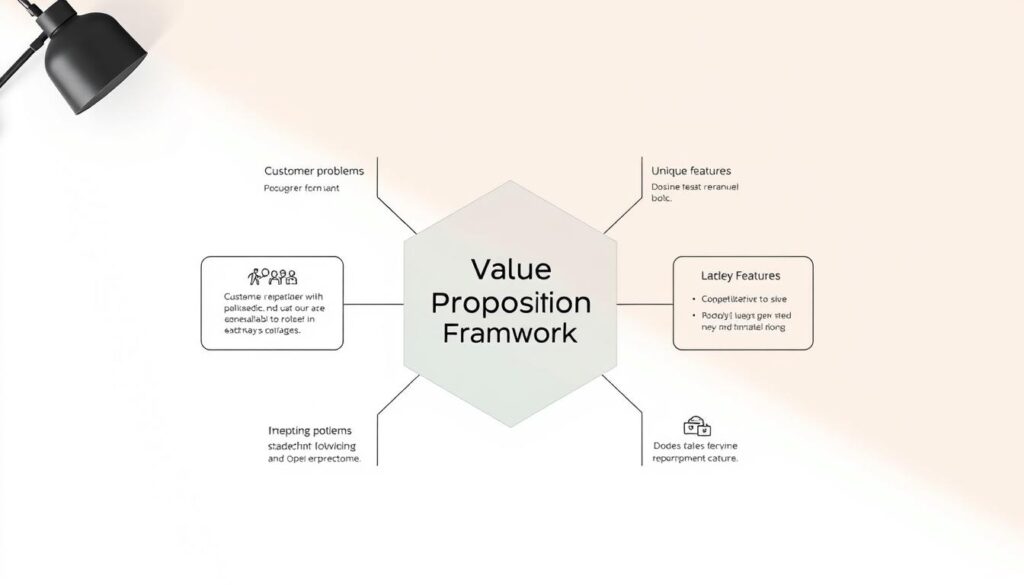Launching a new product or entering unfamiliar territories demands more than just ambition—it requires a cohesive plan that aligns teams, data, and customer insights. Modern organizations face complex challenges when scaling their operations, from fragmented buyer journeys to rapidly shifting market expectations. The difference between stagnation and growth often lies in building adaptable systems that balance scalability with personalization.
Today’s buyers complete over 70% of their research independently before engaging with sales teams. This shift requires strategies that meet prospects where they are, rather than forcing rigid processes. Leading firms like GTM Partners use structured frameworks, such as their GTM Operating System, to unify sales, marketing, and customer success efforts around eight core pillars. These principles create repeatable processes while leaving room for real-time adjustments.
Success hinges on treating strategy as a living process, not a one-time checklist. Companies that continuously refine their proven frameworks outperform competitors by responding to emerging trends and individual needs. The result? Sustainable growth rooted in measurable outcomes and lasting customer relationships.
Key Takeaways
- Unified frameworks align sales, marketing, and customer success for consistent growth
- Buyer independence demands strategies that adapt to research-driven decision-making
- Personalized experiences drive conversions more effectively than generic campaigns
- Eight core pillars form the foundation of high-performance market strategies
- Continuous optimization ensures adaptability in dynamic business environments
Defining a Go-to-Market Revenue Generation Strategy
At the core of scaling business operations lies a systematic blueprint that bridges organizational capabilities with commercial objectives. A GTM strategy acts as this critical connector, detailing how companies deliver value through their products while navigating competitive landscapes. Unlike standalone plans, it weaves together research, positioning, and execution into one adaptable framework.
Understanding the Concept and Business Impact
Effective strategies balance high-level vision with practical steps. While tactics focus on short-term actions like campaign budgets or discount structures, the overarching strategy defines market entry timing, audience prioritization, and partnership models. This distinction creates alignment across departments while allowing teams to pivot when new data emerges.
Companies implementing structured approaches see 32% faster revenue growth than peers relying on fragmented methods. Beyond immediate sales boosts, these frameworks strengthen brand authority and customer loyalty through consistent messaging. They also reduce wasted resources by focusing efforts on high-potential markets.
Mapping the Buyer’s Journey and GTM Phases
Modern purchasing paths resemble winding roads rather than straight lines. Decision-makers might discover solutions through social media, validate options via third-party reviews, then finalize purchases months later. Successful strategies account for this complexity by:
- Identifying key touchpoints across awareness, evaluation, and decision stages
- Aligning content formats with each phase’s informational needs
- Tracking multi-channel interactions through unified CRM systems
Four primary phases structure execution: pre-launch validation, multi-channel deployment, performance analysis, and iterative refinement. Each stage feeds insights into the next, creating a cycle of improvement that adapts to shifting customer expectations and market realities.
Conducting Market Sizing and Opportunity Analysis
Understanding market potential begins with precise calculations that separate ambition from achievable outcomes. Companies that calculate market size accurately allocate resources 3x more effectively than those relying on estimates. This process identifies where to compete and how to win.

Total Addressable, Serviceable, and Obtainable Markets
Market sizing operates like a telescope—zooming from broad possibilities to focused targets. The Total Addressable Market (TAM) shows the full revenue potential if every possible buyer chose your product. Think of it as the “what if” scenario for unlimited growth.
Serviceable Addressable Market (SAM) narrows this scope to realistic territories. A cybersecurity firm might have a $200B global TAM but only $40B SAM due to regional compliance expertise. This layer accounts for practical limitations like distribution channels and technical capabilities.
| Market Type | Definition | Strategic Use |
|---|---|---|
| TAM | Total demand across all segments | Long-term vision planning |
| SAM | Accessible demand with current assets | Mid-range budgeting |
| SOM | Realistic short-term capture | Quarterly goal setting |
| PAM | High-priority accounts | Sales team focus |
Serviceable Obtainable Market (SOM) represents what you can actually win. If SAM is the playing field, SOM is the scoreboard. One enterprise software provider discovered their $8M SAM translated to $1.2M SOM after analyzing competitor contracts and implementation timelines.
“Market sizing isn’t about finding ceilings—it’s about building floors for sustainable growth.”
Prioritized Account Market (PAM) completes the picture by identifying ready-to-buy customers. These high-intent accounts often deliver 70% of early-stage revenue while requiring 30% less nurturing than cold leads.
Identifying Your Target Audience and Crafting Buyer Personas
Understanding who benefits most from your solution separates scattered efforts from strategic growth. Effective teams use customer segmentation to transform raw data into actionable profiles, creating messaging that resonates with decision-makers’ unique needs.
Segmenting Customers for Precise Targeting
ZoomInfo’s approach illustrates this principle. Their sales directors in manufacturing require different value propositions than tech industry marketing leaders. This precision comes from analyzing:
- Job function priorities
- Industry-specific challenges
- Purchase influence hierarchies
Advanced segmentation digs deeper than job titles. A marketing VP at a startup behaves differently than one at an enterprise. Psychographic factors like risk tolerance and innovation adoption rates often determine buying patterns more than company size.
B2B purchases involve 6-10 stakeholders on average, each with distinct concerns. Finance teams prioritize ROI timelines, while IT departments focus on integration complexity. Understanding customer dynamics in CRM systems helps map these relationships.
“Personas aren’t caricatures—they’re behavioral blueprints built from real conversations and usage data.”
Modern tools track how different audience segments interact with content across channels. This reveals whether engineering managers prefer technical webinars over case studies, enabling teams to allocate resources effectively.
Developing a Compelling Value Proposition
The foundation of customer loyalty lies in solutions that solve real problems while delivering measurable outcomes. Organizations that master this balance transform transactional relationships into long-term partnerships. A value proposition acts as the bridge between what businesses offer and what buyers truly need.

Addressing Key Customer Pain Points
Effective messaging starts by identifying friction points that hinder progress. Decision-makers prioritize vendors who demonstrate deep understanding of their operational hurdles. Research shows companies addressing specific pain points achieve 42% higher conversion rates than generic approaches.
Five core challenges dominate modern purchasing decisions:
| Pain Point | Focus Area | Solution Example |
|---|---|---|
| Budget | Cost optimization | ROI calculators showing 18-month payback |
| Process | Workflow efficiency | Automation reducing manual tasks by 60% |
| Productivity | Output quality | Real-time collaboration tools cutting project timelines |
| Support | Implementation success | 24/7 onboarding specialists |
Budget concerns remain top priorities. A manufacturing client using strategic alignment tools reduced equipment downtime costs by 37% within six months. This demonstrates how tailored value propositions translate features into financial impact.
“Great solutions don’t just answer needs—they reframe what’s possible for the customer.”
Process improvement opportunities often hide in daily workflows. Teams waste 23% of their week on redundant tasks according to recent studies. Highlighting time-saving capabilities makes your product indispensable rather than optional.
Crafting Messaging and Product Positioning
Cutting through market noise demands razor-sharp communication that connects product capabilities to tangible outcomes. Winning teams transform technical features into relatable stories, answering one critical question: “Why should your ideal customer care?”
Differentiating Your Offer in a Competitive Landscape
Effective differentiation starts with real-time competitor analysis. Leading SaaS companies track three key areas:
- Feature gaps in rival solutions
- Pricing model vulnerabilities
- Unaddressed customer support needs
For example, a cybersecurity firm discovered competitors focused on threat detection speeds while neglecting user-friendly dashboards. By emphasizing intuitive interfaces in their messaging, they captured 19% market share within 12 months.
“Positioning isn’t about being different—it’s about being meaningfully better at solving specific problems.”
Building Clarity and Consistency in Your Messaging
Decision-makers encounter 27+ marketing touchpoints before purchasing. Inconsistent narratives create confusion, while aligned communications boost trust by 68%. Implement these practices:
- Create message hierarchies prioritizing primary vs secondary benefits
- Train cross-functional teams on core value propositions
- Use AI tools to audit content for brand voice alignment
One fintech company reduced sales cycles by 22% after unifying their marketing and support teams around three central themes: security, speed, and simplicity.
Mastering go to market revenue generation Tactics
Modern revenue engines thrive by combining targeted approaches that address diverse buyer behaviors. The most effective GTM strategies blend outbound precision with inbound attraction, creating systems where multiple tactics reinforce each other.
Outbound efforts let sales teams control outreach timing and messaging. Cold emails paired with intent data achieve 27% higher response rates when aligned with prospect research stages. Inbound methods like SEO-optimized content attract decision-makers already comparing solutions, reducing acquisition costs by 41%.
Partner-led approaches amplify reach through trusted networks. One SaaS company boosted qualified leads by 63% by co-hosting webinars with complementary platforms. Product-led growth shortcuts traditional marketing funnels—freemium users convert to paying customers 3x faster than cold prospects.
Event-based tactics create momentum through live demonstrations. Virtual summits generate 58% of high-intent leads for B2B firms, while trade shows accelerate deal closures by 22%. These channels work best when teams track cross-channel performance to optimize budgets.
Successful strategies evolve through constant testing. Analyze which combinations drive pipeline velocity and customer lifetime value. Balance short-term wins with sustainable systems that adapt as market conditions shift.
FAQ
How does go-to-market strategy differ from traditional sales approaches?
Unlike conventional sales methods focused solely on closing deals, go-to-market revenue generation aligns product development, marketing campaigns, and sales processes with specific market needs. This integrated approach prioritizes customer lifetime value over short-term transactions, using data-driven insights to optimize acquisition costs and retention strategies.
What metrics prove a go-to-market strategy’s effectiveness?
Key performance indicators include customer acquisition cost payback period, average revenue per user (ARPU), and lifetime value to CAC ratio. Successful strategies maintain at least a 3:1 LTV:CAC ratio while achieving consistent month-over-month growth in qualified leads and conversion rates.
Why are detailed buyer personas critical for market entry?
Precise personas enable teams to tailor messaging to decision-makers’ operational challenges and strategic goals. HubSpot’s 2023 GTM research shows companies using validated personas achieve 73% higher lead quality and 58% faster sales cycles through aligned content and channel strategies.
How should companies balance technical and emotional appeals in value propositions?
Effective positioning combines quantifiable ROI metrics with narrative-driven pain point resolution. Salesforce’s 2024 State of Marketing report reveals high-performing organizations allocate 60% of messaging to specific operational improvements and 40% to leadership vision alignment.
What distribution channel mix maximizes new market penetration?
Top performers combine owned media (webinars, case studies) with targeted account-based advertising and strategic partnerships. Recent data shows 47% of successful market entrants allocate 30-40% of budgets to LinkedIn-sponsored content and industry-specific podcast advertising for executive-level engagement.
When should teams revise their go-to-market strategy post-launch?
Continuous optimization occurs through weekly performance reviews of lead sources and conversion funnel metrics. Major strategy pivots become necessary if customer acquisition costs exceed projections by 25% or if product-market fit surveys show less than 65% satisfaction in core use cases.



